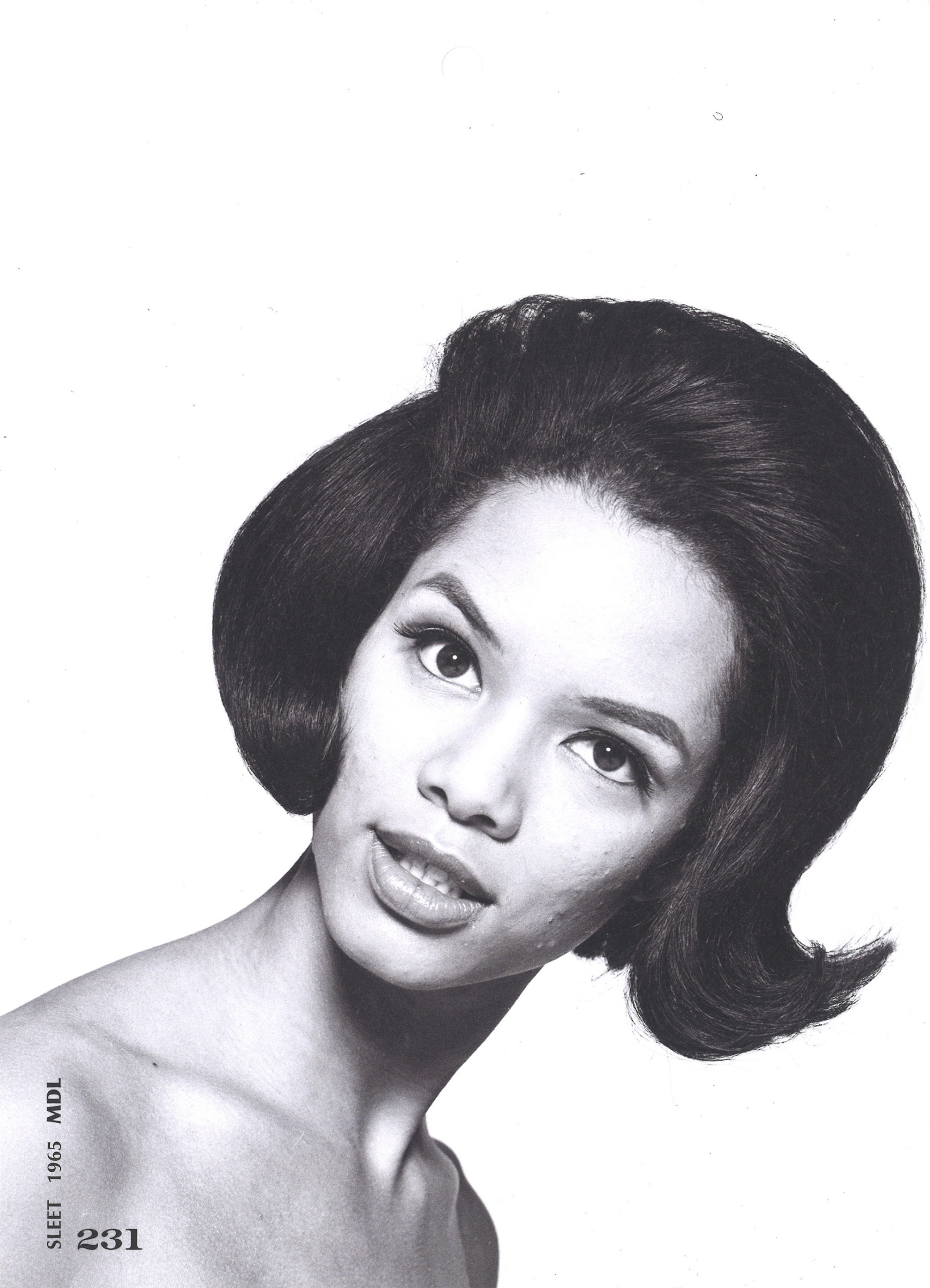Theaster Gates, The Black Image Corporation (Fondazione Prada, 2018)
In 2018, the conceptual artist, archivist, and jazz musician Theaster Gates published The Black Image Corporation on the occasion of his eponymous exhibition at Fondazione Prada, Milan. A few years earlier, Gates had been granted use of a selection of more than four million images that comprise the Ebony/Jet photo archive of the Johnson Publishing Company—founded in 1942 in Chicago by the African American businesspeople John H. Johnson and his wife, Eunice Johnson. In Gates’s interdisciplinary practice, he makes work that explores the rich legacy of Blackness by constructing spaces like Rebuild Foundation—a nonprofit dedicated to art, cultural development, and neighborhood transformation on the South Side of Chicago—and by fashioning found objects and printed materials into painting, sculpture, and sound. He proposed using the archive to create a new gesture beyond a simple museum experience: “I would do what John and Eunice did. I would be a publisher.”
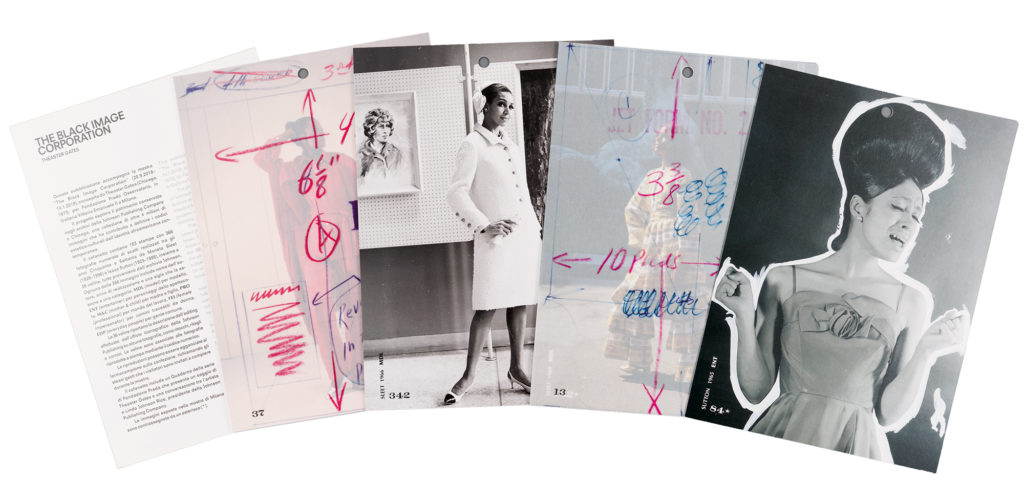
The catalogue is a boxed set of black-and-white cards featuring photographs of Black women, all taken by the photographers Isaac Sutton and Moneta Sleet Jr. in the mid-twentieth century and drawn from the Ebony/Jet archives. It is an extraordinary portrait of Black femininity in all its multivalence. The images manifest the Black human condition on the printed page with a radical sense of self-regard. There is a real care for the women pictured: Their Blackness is not thinly and curiously captured. They are seen because they are known. They are known because they are understood. To pull one picture from the box is to experience a Black world, assiduously arranged, from within the space of two Black magazines.
Curator and critic Antwaun Sargent speaks with Gates about establishing The Black Image Corporation in order to expand the pioneering legacy of the Johnson Publishing Company; and about his redeployment of the images as a way to reassign, reconsider, and refinance them—his insistence that they remain active documents of Black life.

Antwaun Sargent: What drew you to the Ebony/Jet photo archives?
Theaster Gates: In many ways, John Johnson is responsible for the expressed manifestation of the Black middle class and Black elegance in America. That was his ambition—and it’s funny that it was a corporate platform. But it was a corporate platform with a radical mission, which was to show Black people around the country that they weren’t alone in their academic pursuit, intellectual pursuit, financial pursuit, social pursuit, beauty pursuit, and that if they were going to do that with radicality, they needed to own the company. It wasn’t expected to happen in Life magazine or Reader’s Digest. Over the years, I got to meet the Johnsons’ daughter, Linda Johnson Rice, who concretized my access to the Johnson Publishing holdings. She invited me to receive and be the steward of their library—twenty-six thousand books, among other things.
Sargent: I saw the show Theaster Gates: Black Image Corporation at Spelman College, Atlanta, and of course,there is the publication that accompanied the work when it was first shown in Milan. It’s one thing to show the visualization of Black women and Black women’s beauty, but another to take the vision of Mr. Johnson and say in response, “Let’s create The Black Image Corporation.”Can you explain that gesture?
Gates: Let’s say, first, if I’m limited to a small set of images from over four million images, how do I begin to create criteria for what’s important to view? That was my challenge. How do I start to limit the scope? Do I focus on celebrities? Do I focus on everyday people? Do I focus on major historic moments? Ultimately, I just felt like within my artistic practice, I hadn’t given enough energy to Black women and the role that they played in my life, in my development. This became an opportunity to use eighty years of Black portraiture to focus on teachers, social workers, young lawyers, mothers, firefighters, all women—all keeping this country together in their activities.
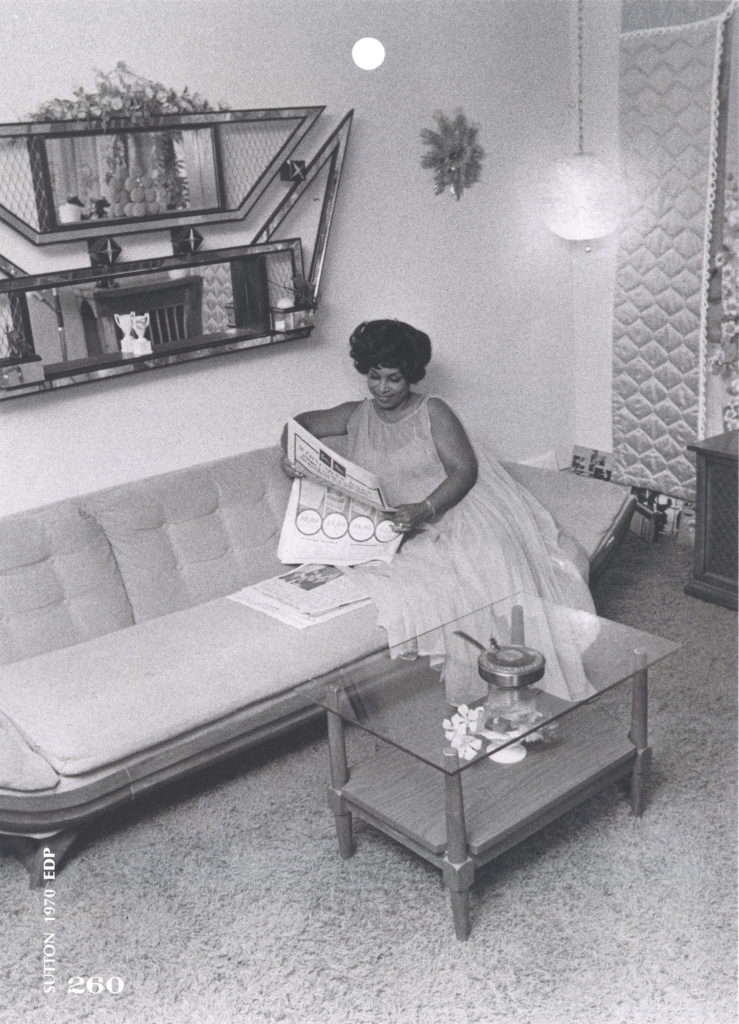
Sargent: What emerges from that gesture is a focus on not only Black female labor, but on their beauty. How they wanted to be seen. Those images are documentation of what was to come—the use of fashion and the magazine as an opportunity to document Black self-expression. It’s the conversation we’re having in photographic practice today, particularly in relation to the work of a lot of young Black photographers.
Gates: That’s exactly right. For AnOther Magazine or Vogue to have one all-Black spread feels radical. But in fact, what was happening in the forties, fifties, and sixties with John Johnson was even more radical. These images are not from a white corporation that has, from time to time, a Black spread. John Johnson said, “We’re going to have Black secretaries, Black editors, Black film directors, Black producers.” Everybody was Black. The second part of your question: why would I choose the name Black Image Corporation as the platform by which I redeploy these images? I take a very strong position that John Johnson understood the importance of capital. I wouldn’t call him a capitalist. I would say he understood that he needed fuel for his organization, and that fuel could come through advertisement. I was going to pay tribute to John Johnson, instead of making a museological experience, I would continue to run a business; I would do what John and Eunice did. I would be a publisher. I feel very much that this is where my contemporary art practice situates itself. It’s actually just a very formal move, that if you start with the corporation, you continue with the corporation. If you start with a roof, you end with a roof.
Sargent: One of the things that I’ve always enjoyed about your practice is that, in a lot of ways, it’s about creating and reverberating Black space. How do you see Black space in this project?
Gates: The corporation, it’s really just a legal designation for another kind of psychological or emotional or spiritual site. I own my art thing—we have these buildings, but is it possible to use the legal documents as a location?
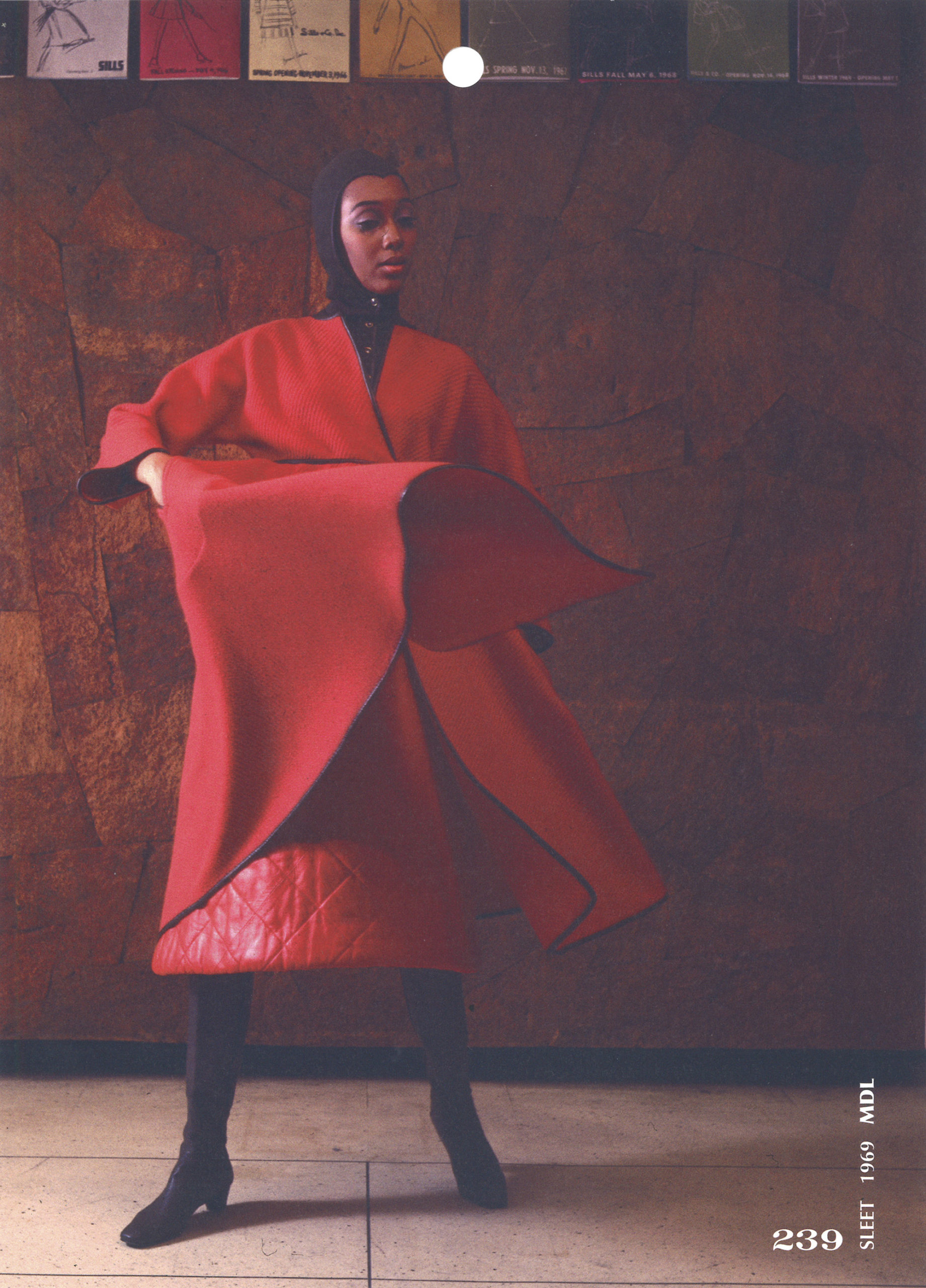
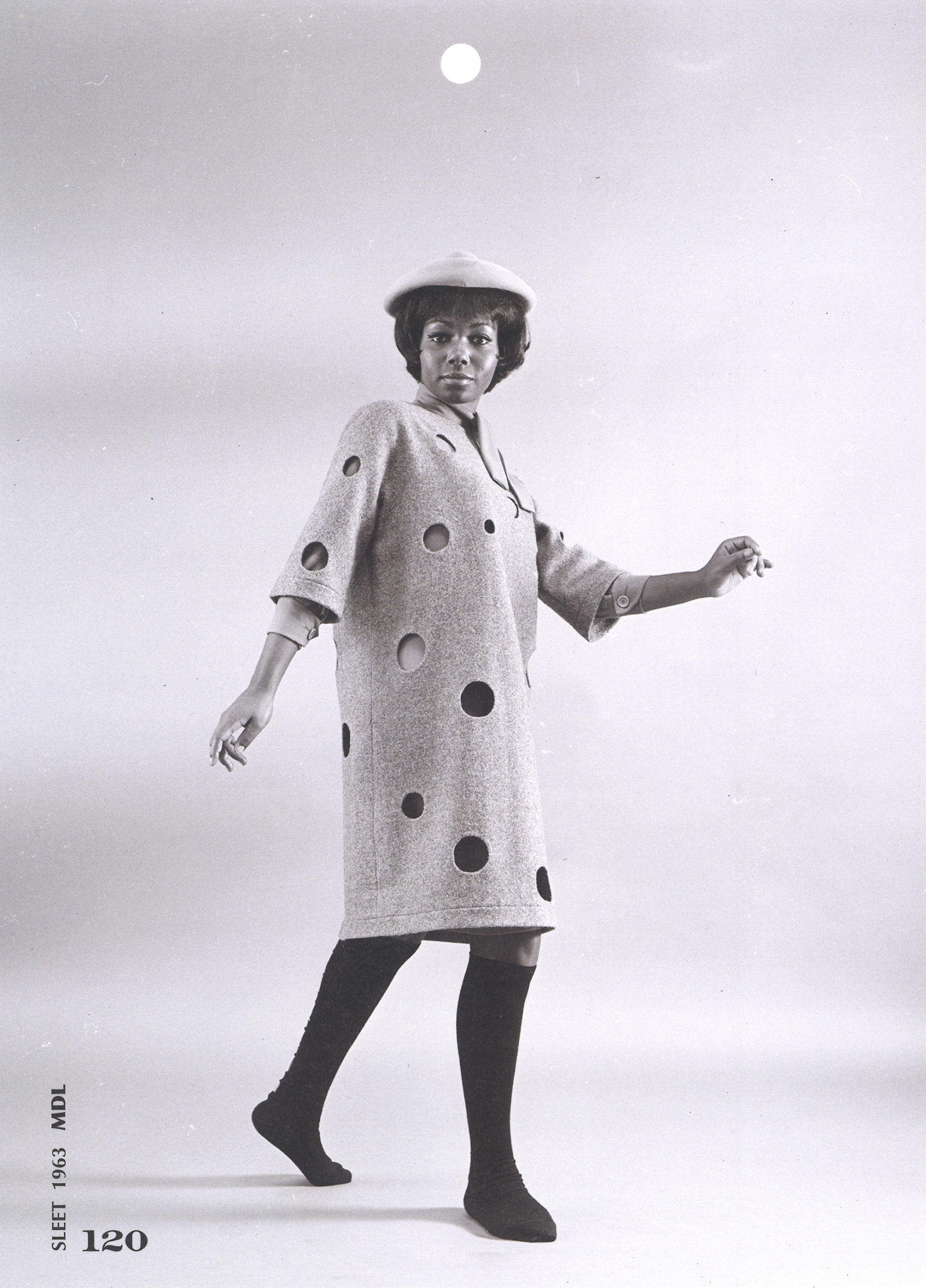
Sargent: The photos too, the photo as a location, the pages of magazines as location.
Gates: Exactly. But what the legal document of incorporation does is open up legal permission to occupy space. Occupancy is within these images. What I try to talk about, in America, in these times, is the litigious work. I want to pay for the site. I want to purchase the permission to have these images occupy public space without apology. I want to negotiate the terms of the corporation that John Johnson had created. But then another part is, what role can an artist play in ensuring that these images are not just in the white museum on a hill that’s difficult to get to? How can we ensure that the images remain in Black space? Sometimes, in order to ensure that our images remain in Black space, we have to buy them.
Sargent: Right. What’s brilliant about the installation as it travels from one space to another is that it, in itself, creates Black space. I think it is very important in this moment when we’re thinking about new structures in the art world, new structures in photos, and in magazines and books—new structures in how we express an immense Blackness in spaces that have historically denied us. One of the words you use in relation to this work is appropriation. Can you expand on how you are thinking about your interventions in those images from these archives?
Gates: Two things were important. John Johnson bought full rights to all the images, and the artists were paid handsomely to give up their copyrights as work-for-hire. But I wanted to first be able to celebrate them. This was a way of not just redeeming the Black image, but redeeming Black artists. Then, in terms of what my intervention should be, I went back and forth. Should I dip them in tar? Should I put a wax pencil on them? Should I make my own edit notes? And what I realized is that my intervention was actually at the place of purchase. At the moment when the company was in peril and transitioning from an active company to a historic company, a legacy. I wanted my intervention to be: Black people care about these images. There is richness in this company.
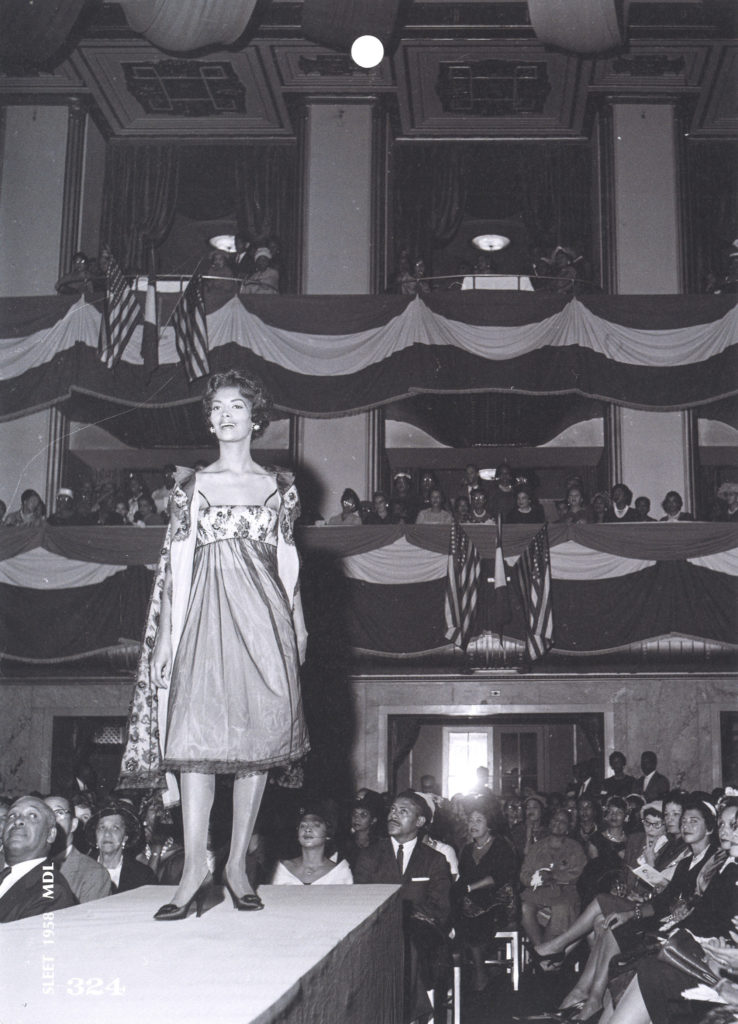
Sargent: It’s such a deeply conceptual gesture. Since then, the entire archive has been purchased by four different foundations, and there seems to be a plan to have the images available for research. A photo as a research document and a photo that lives on in the world as art or in a book have two very different functions. Have you given any thought to the new positionality of these images in light of that purchase?
Gates: If you look at the cultural sphere and the role of the foundation, the role of the museum, and the role of the archives historically, those roles are very different from the role of the art. I was bidding on the lot and the bidding got to $12.5 million. I was the last bidder, and MacArthur, Ford, Getty, and Mellon intervened, and the collection was acquired on behalf of the Getty Research Institute and the Smithsonian National Museum of African American History and Culture.
Sargent: I didn’t know you were bidding for the complete, four-million-photo archive.
Gates: I was bidding on Blackness, I was bidding with Blackness, and I was bidding against, potentially, people who wanted to take the images and use them as Target or McDonald’s commercials. It became evident that the value of the company was greater than any individual ownership. So then, the question becomes: who gets to own the Black image? I was prepared to purchase it, and at midnight, these institutions recognized the value and decided that they would put it in other institutions, by which it could be preserved, cared for, conserved, disseminated with more equanimity. In that sense, I recognized the importance of the intervention. I’m really glad that the archive went to places where, hopefully, Black scholarship will become even more important.
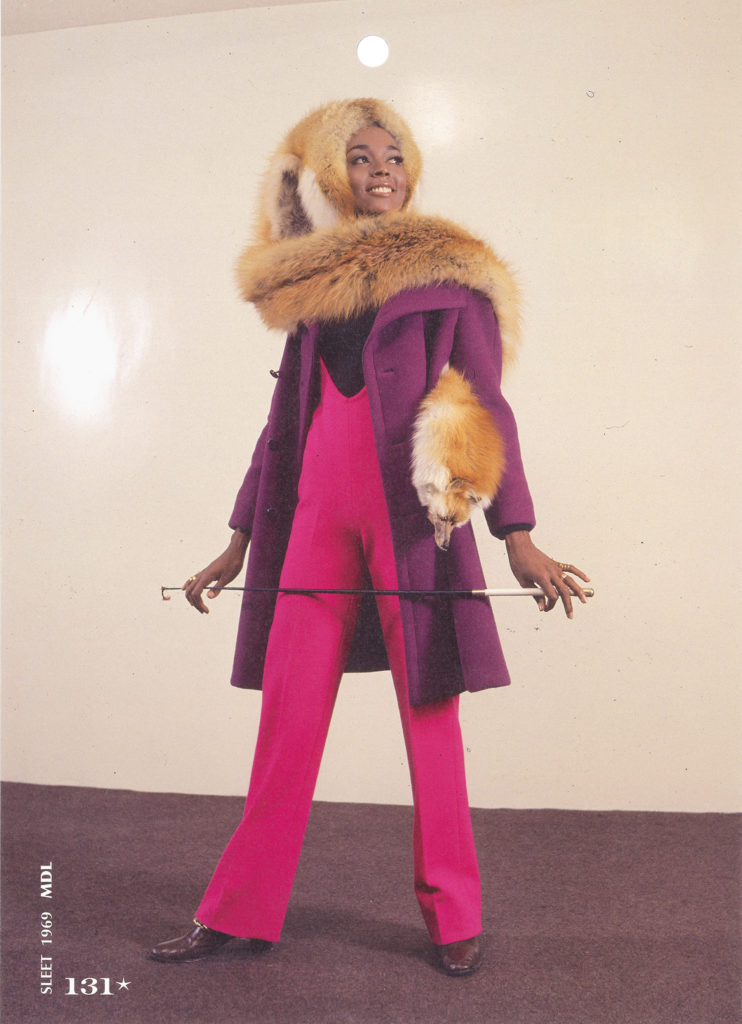
Sargent: You could have presented these images in a million different ways. Why a point-of-contact installation and the publication, where the viewer can actually be in communion with these images?
Gates: I was really trying to re-recall the joy that I had when I was first given permission to touch the images myself. Linda Johnson Rice and I went into a conditioned vault, and Linda started to unfurl her favorite images from the collection. She showed me images of James Baldwin hanging out with Tyler Washington, dancing and smoking. She showed me pictures of Prince, and of James Brown getting his hair done. It felt like we were involved in an impermissible act of wonder and discovery. I wanted to create a cabinet of curiosity where the public would be given permission to look boldly and intimately at Blackness, even in places like Basel, Switzerland. They could come face-to-face with the Black Madonna, with the everyday Black woman who’s helped to govern the world.
Sargent: It also goes back to the history of how one would experience these images in a magazine, and the history of the family photo that you hang up in your house—a physical and intimate interaction. The installation and book focus on the work of two Black image makers, Isaac Sutton and Moneta Sleet Jr. How did you arrive at highlighting these two specifically?
Gates: Honestly, given the limitations of time and access, Moneta Sleet Jr. was the most accessible, and his photographs moved me. In addition to doing many of the beauty shots and the fashion work, he also did journalistic photography, which included going every year to the Chicago drag ball from 1950 to 1958, a super-underground situation. Sleet and Isaac Sutton, they were on the ground. When they weren’t shooting for John Johnson, they were shooting for themselves. They were archetypical embodiments of what it meant to be a Black photographer in those times.
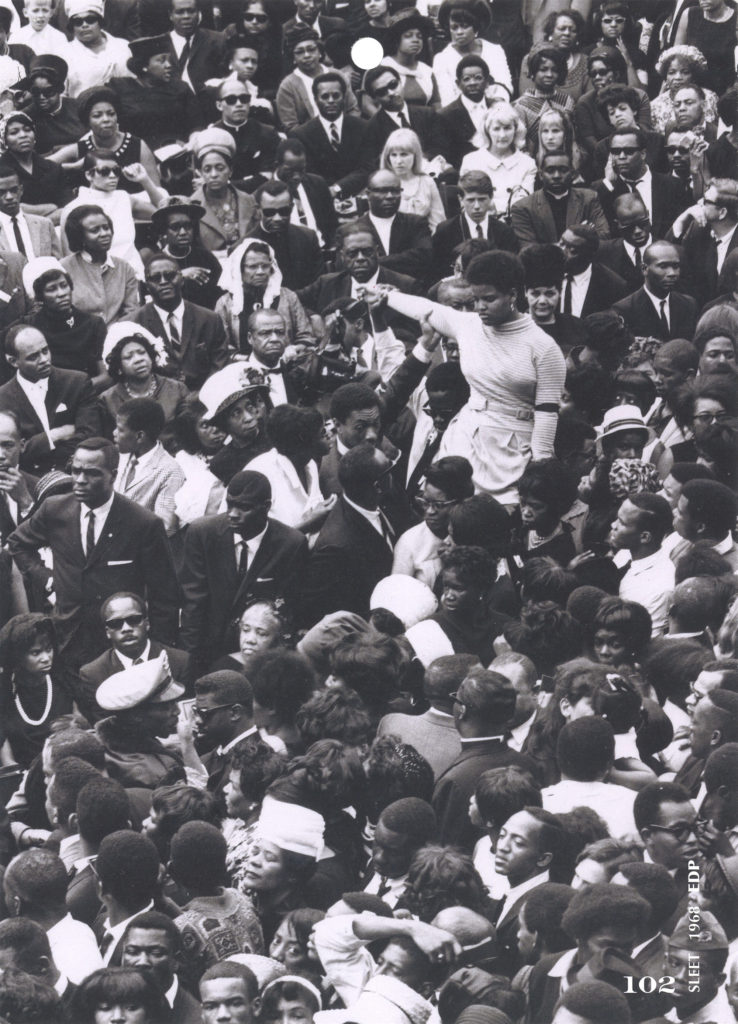
Sargent: This project is obviously about the legacy of Black-led magazines for Black audiences. It strikes me that today we don’t have those sorts of magazines. The Black Image Corporation is a reminder of what can happen in Black space if we are in total control. When we are the editor, we are the owner, we are the photographer, we are the subject. This project is a reminder that a Black world is possible, because it once was.
Gates: In some cases, the best way to capture our sincere dignity is to show that Black people are present. We’re not just at the event, we’re in the event. We are with one another capturing our own stories and then repositing those stories in our own magazines, in our own books. I feel very much like I’m part of a conceptual, entrepreneurial pursuit. It’s not platforms for platforms’ sake. It’s platforms that help with the healing of our nation. When people come to Chicago and see the Stony Island Arts Bank or they go by the Currency Exchange Café or other projects that I’ve done, I’m trying to demonstrate that we have that ability—even in moments of darkness, that there is light in Black space. The redevelopment of these buildings isn’t because I had a desire to be a developer or to make money as a landlord. It’s really to play with the alchemy of Black space and convert it from crack, disease, bad education, violence into beauty, possibility, restoration. What’s evident in the construction of Johnson Publishing is that John and Eunice Johnson authored for us a roadmap, a sophisticated and complicated, integrated relationship with society.
This piece originally was published in Issue 018 of The PhotoBook Review.










